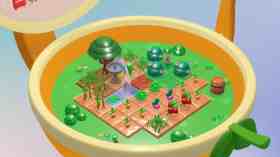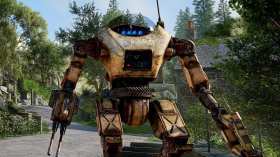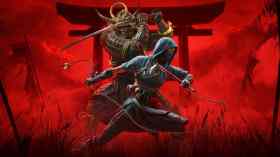Wind disguised as whispers. Scraping footsteps from behind. The dark presence at the very border of your periphery. An eyelash? A blink? An ominous shadow, or looming presence? No. As you reflexively flick your head around, you’ll see only nothingness – and that may be even more frightening.
Holding true to the chills and paranoia of the original, Senua’s Saga: Hellblade II is a foreboding and bone-tingling follow-up that maintains the slick, oozing essence of its predecessor – all the while breaking new ground visually, and pushing Senua even further from her comfort zone.
We open on a slaver’s warship, where Senua has seemingly willingly allowed herself to become captive. Her confidence bolstered from the success at the end of the first game, she’s now taking the fight to the Northmen, doggedly hunting them down on their own shores.
But something looms on these unfamiliar lands – something colossal in both size and threat level. As Senua tries to determine what’s real and what’s just her mind playing tricks, she must find the strength to face down more than just her personal demons.
As sequels go, there’s always a high level of expectation, especially with a game as lauded as Senua’s Sacrifice. Senua’s Saga: Hellblade II gives you a masterclass in sound design and mental health representation, but it’s fair to say that a lot of the shock value from the first game is lacking.
The first game’s big point of difference doesn’t feel as jarring now that we have a stronger understanding of what’s at play. Senua’s psychosis is still all-encompassing, and portrayed extremely skilfully, but although there are deeper elements, it’s something we’re more familiar with.
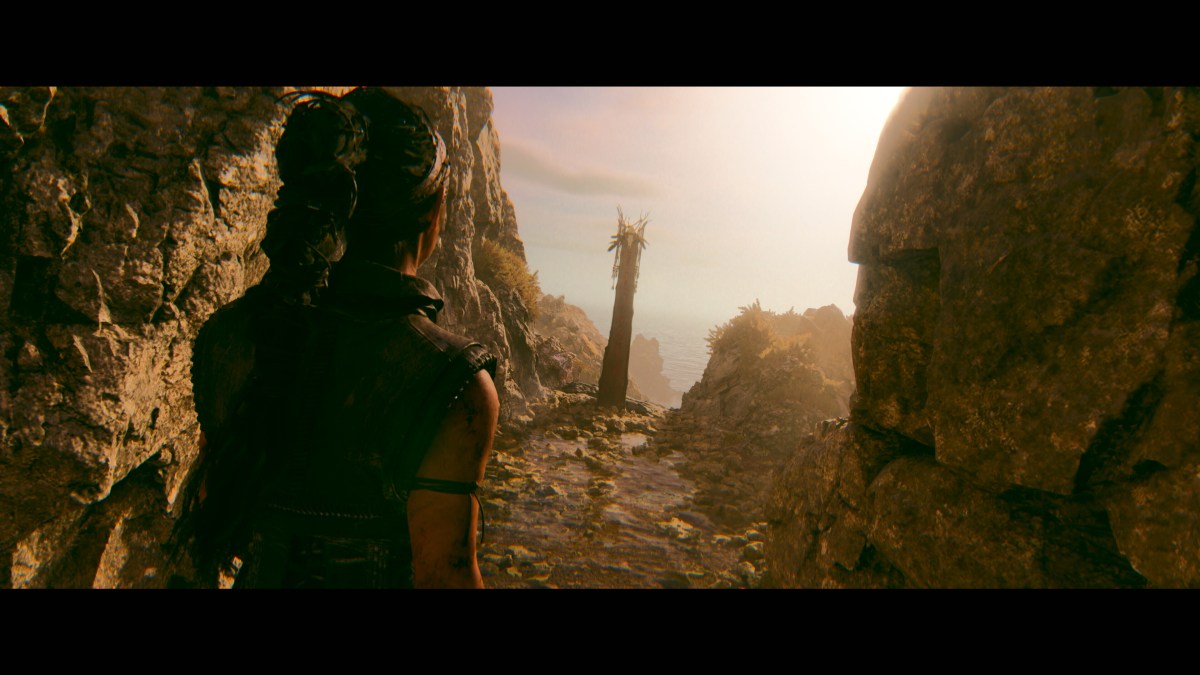
Striking visuals, unmatched audio
The leap to Unreal Engine 5 truly makes a world of difference when you play Senua’s Saga: Hellblade II, after making your way through the first game. It’s easily one of the most ambitious, aesthetic games to come out of Ninja Theory, and the photorealism is striking.
From the details of Senua’s body – with startlingly realistic skin textures and animation – through to the grim but beautiful landscapes, there’s no two ways about it: the game is stunning.
Designed to emulate the Icelandic beaches and hills, there’s a real energy to the environment. Smoking hills and ravaged plains feel acutely real, and though I’ve never personally gone to Iceland, it conjured up memories of similar locales – with one location giving the same kind of geothermal energy as Aotearoa’s Craters of the Moon.
And the memories don’t stop at the natural world. Walking through devastated, blood-soaked villages conjures similarly gritty memories of traipsing through areas like Skellige in The Witcher 3, but with an added darkness that pervades each new scene. It’s uncanny how familiar and foreign it feels at the same time.
Despite how awestruck the visuals will leave you, the real gem in Senua’s Saga: Hellblade II‘s crown is the audio offering. Ninja Theory recommends wearing headphones for your playthrough, and I fully agree. I started using the SteelSeries Arctis Nova 4X Wireless headset about an hour or so into play, and it changed everything.
The binaural sound that seemingly encircles your skull as voices echo in Senua’s head… it’s incredible. Each sound feels crisp and individual, even when layered in a cacophony of voices and noise. Ominous shadowy voices feel deep and strong, but the whispers still hold their own, fidelity-wise. As overwhelming as this can sometimes feel, it matches the mood perfectly.
But it isn’t always crowded and raucous. While traversing and exploring, there were occasionally really pleasing moments of peace, where the natural sound seemed to quieten Senua’s mind.
Occasionally, when I would turn to my laptop to write some notes for this review, I’d find myself sitting there a little longer, listening only to the rustling of half-destroyed nature – the cawing; the buzzing; the billowing of half-torn flags in the wind; and the tense, strained breaths as Senua takes in her surroundings.
It’s that breath that carries you through, especially in moments of Focus where all else is blocked out. As a person who gets easily overstimulated, it’s a familiar feeling – one that helped encourage me to fight through the more intensive sections of the game in search of peace.
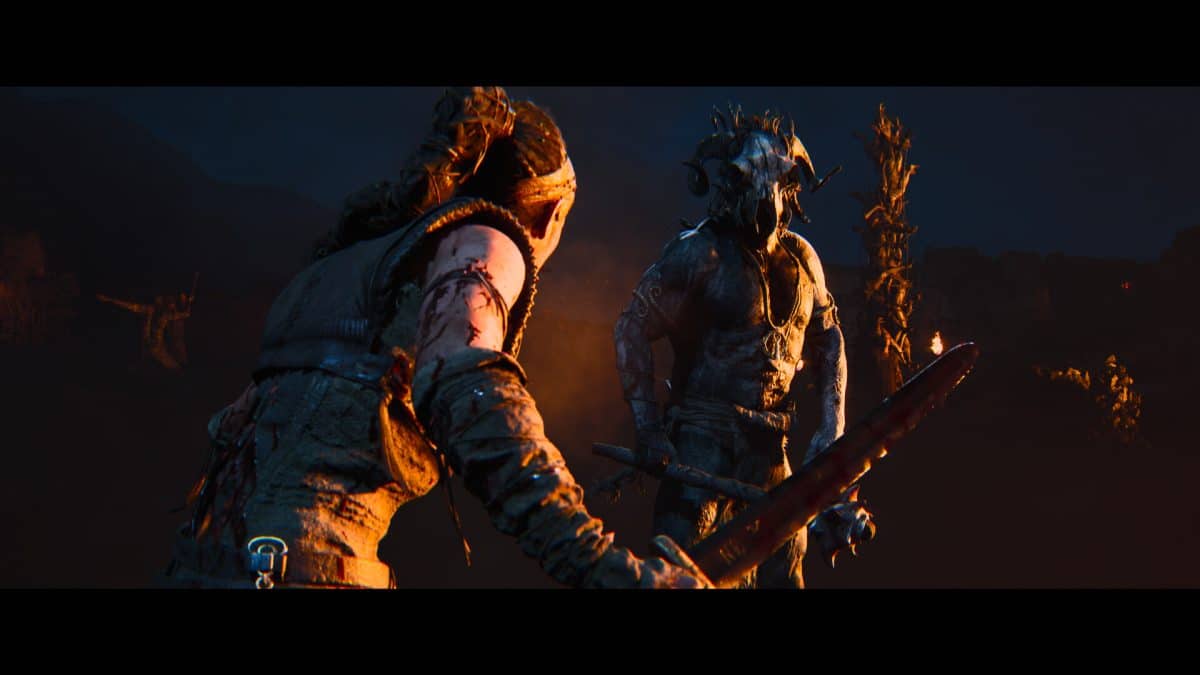
Fluidity and form, until there isn’t
If you enjoyed the combat and puzzles in Hellblade: Senua’s Sacrifice, chances are you’ll also enjoy the same in Senua’s Saga: Hellblade II. There have been some noticeable improvements to the flow and form of combat, but on the whole, it sticks to the same kind of feeling as the first game.
Combat feels a bit more fluid, but equally precise. Going from movement to movement is smooth, but parrying and dodging is of huge importance – especially when facing down foes with considerably more strength than Senua.
The mocap and physical performance of Melina Juergens is also incredible. Ninja Theory recently confirmed the team spent 69 days in performance capture for the combat alone. This dedication shows, and gives Juergens more room to fully encapsulate her character.
Outside of these wins, I wouldn’t necessarily say there’s anything groundbreaking in the combat arena, but it’s still engaging and provides some much-needed balance to the heaviness of the narrative. After all, there’s nothing like whacking something with a sword to give you an adrenaline rush.
If there’s one place that Senua’s Saga: Hellblade II fell down for me, it’s when Senua travels with others, and the pace slows. Narratively, it makes sense – you wouldn’t keep up a conversation with people while sprinting ahead – but the narrative occasionally cuts the legs from under you when you’re on a roll.
It’s clear that these moments are designed to get you to take in your surroundings and the conversations around you, but it can certainly feel a bit stifling when you’re raring to keep going. Smelling the roses is one thing, but when it slows you down to the point of neglecting exploration, there are fewer roses and more thorns.
Exploring the depths of psychosis
Play any section of Hellblade II and you’ll see the degree of care and devotion that Ninja Theory put into making sure the portrayal of psychosis was accurate. In a recent post on Xbox Wire, Ninja Theory Studio Head Dom Matthews spoke on the lengths the studio went to achieve this.
“We started a collaboration with Professor Paul Fletcher, Professor of Health Neuroscience at University of Cambridge, which in-turn led to us building a partnership with Recovery College East and other groups of people who, like Senua, have had real lived experience of seeing and hearing things that others don’t and having unique beliefs about the world,” he said.
And it’s that level of care that makes it so engaging. Hellblade II treads the line between what’s real and fantasy, just as Senua treads it herself. This is an intense, heavy game – and with noticeably improved graphics and audio, it surpasses the first game’s immersion to feel wholly encompassing.
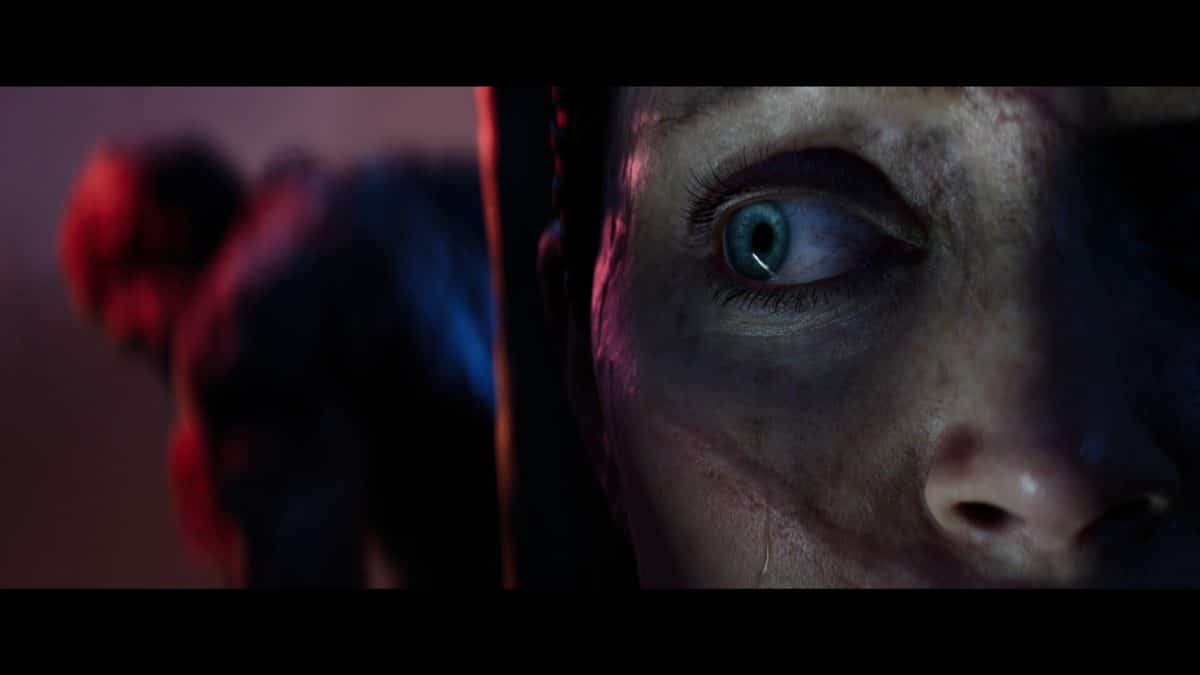
The anxiety that the Hellblade games can instil is one that isn’t going to be for everyone. As someone with a tendency to baulk at overstimulating sounds and situations, it can definitely feel overwhelming at times – and it was during those times that I found myself engaging in the 5-4-3-2-1 anxiety coping mechanism, by way of Senua.
One such occasion was the first time I encountered a sacked village, very early on in the game. As Senua wandered through the destruction, I imagined I was going through the very same process as her.
- Acknowledge FIVE things you see around you: rain-soaked pavement, burnt frames, grass-thatched roofs, lifeless bodies, frenzied flies in the air.
- Acknowledge FOUR things you can touch around you: heavy wooden doors, the hilt of your sword, the swing of your ponytail at your back, the spray of sea water and smoke.
- Acknowledge THREE things you hear: the buzz of the flies, a cawing of corvids, the crackle of a nearly stifled fire.
- Acknowledge TWO things you can smell: acrid smoke, and the loss of life.
- Acknowledge ONE thing you can taste: salt on the tongue, from the proximity to the sea.
This practice, though experienced through the persona of a video game character, served to help calm me as a player. In a game where the reality of psychosis is so fully developed and representative of real-world symptoms, every little bit helps.
Senua’s Saga: Hellblade II – The Verdict
Senua’s Saga: Hellblade II is a feast for the senses, with a design that makes you want to spend hours looking at each and every slab of rock. While clad in a headset that amplifies the impressive binaural sound, I thoroughly enjoyed diving into the shoes of a more confident, determined Senua.
Though the combat and puzzles don’t feel new enough to really lift it to the next level, and devotees of the original might feel a bit let down by the lack of a real leap forward when it comes to those elements, Senua’s Saga: Hellblade II dazzles in the mere existence of its full, well-rounded world – a world where reality and fantasy collide just as often outside Senua’s mind, as it does inside.
Senua’s Saga: Hellblade II is the type of sequel that shows growth in its own way. Just as Senua has come into her own, so have her tales. You wouldn’t expect her to suddenly be a sword-spinning knight after one adventure – but you can feel the level-up in her perception and confidence, both of which are demonstrated through the visual and audio mastery that Ninja Theory have brought to the table.
Four stars: ★★★★
Senua’s Saga: Hellblade II
Platform(s): Xbox Series X and Series S, PC
Developer: Ninja Theory
Publisher: Xbox Game Studios
Release Date: 21 May 2024
A copy of Senua’s Saga: Hellblade II was provided by the publisher for the purposes of this review, and was played on an Xbox Series X. GamesHub reviews are rated on a five-point scale.


